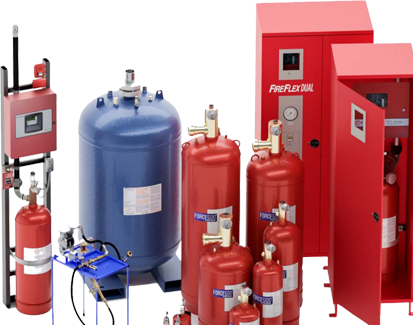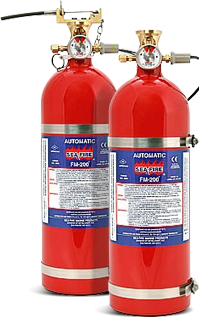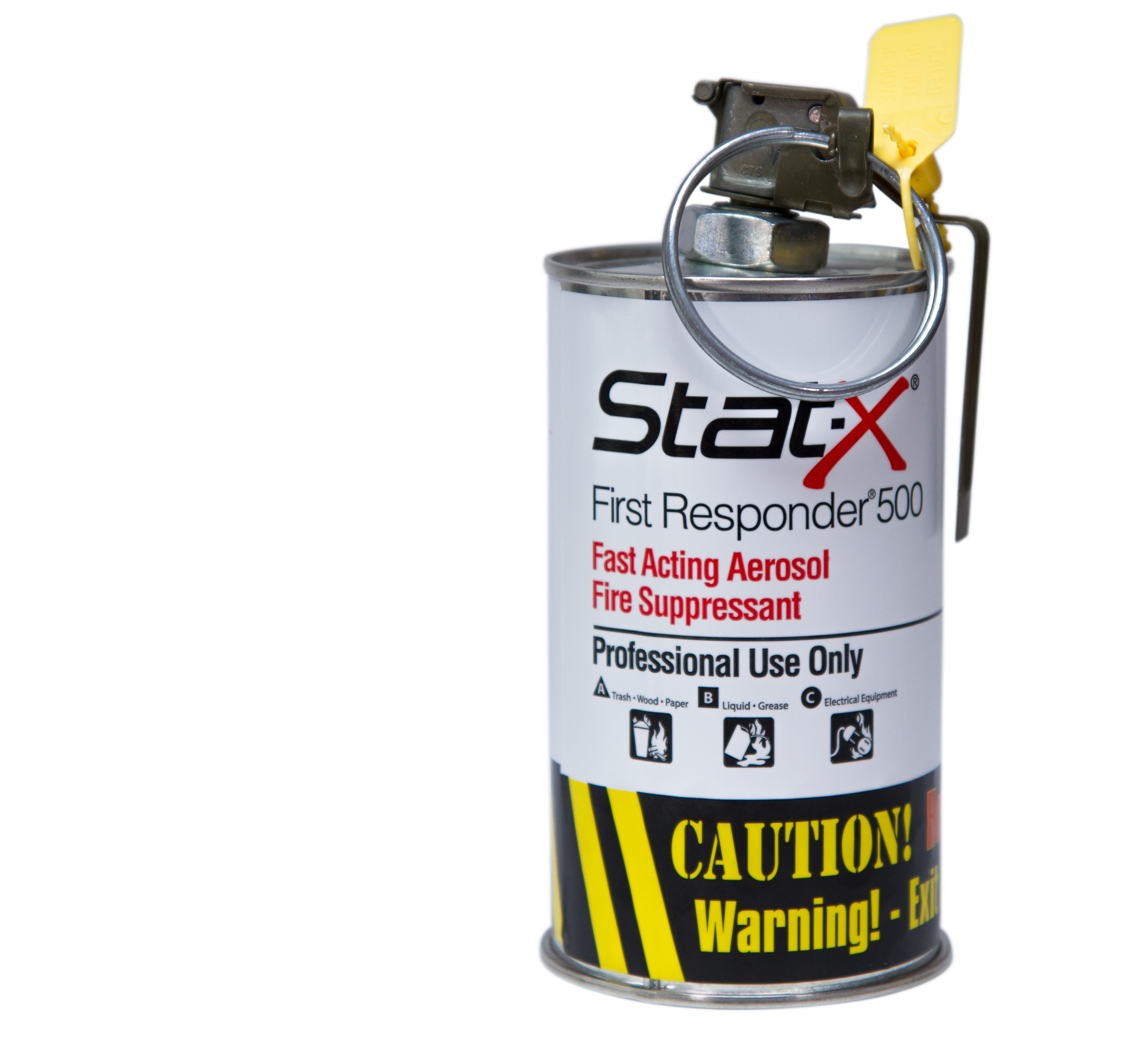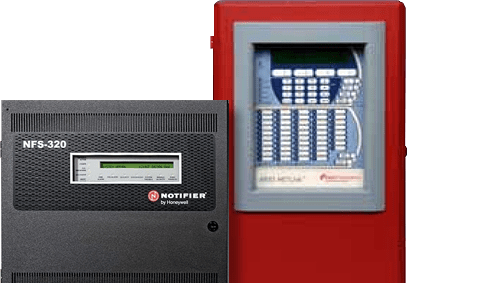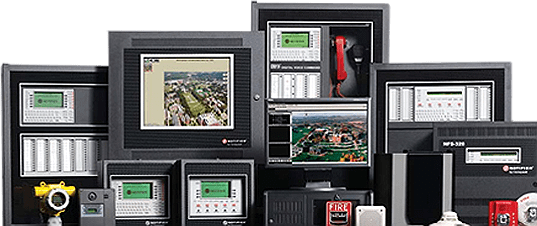The Impact of Smart Technology on Fire Detection and Suppression

For many years, the technology of fire suppression and detection changed very little. In the last 25 years, fire suppression and detection technologies have undergone an amazing evolution. Looking toward the future, the rate and scope of technological change that will affect the fire suppression and detection industry promise new and exciting innovation to make these systems more responsive. Smart technologies are creating more sensitive detection capabilities, better responses, and quicker activations than ever before.
What is Smart Technology in Fire Safety?
Speed of detection and speed of response are key to minimizing damage from fire. Advance technologies in detection and suppression systems allow fire suppression systems to respond more efficiently and accurately. Designers can leverage advances in Artificial Intelligence and the Internet of Things to harness the power of advanced sensors to create better safety and protection systems. Some of the key components of these advanced innovative systems include the following.
Explore further
- IoT integration allows smart systems and components to connect seamlessly for real time monitoring and control of fire suppression and life safety systems. This results in more efficient monitoring, faster responses, and better coordination of assets during emergencies.
- AI systems continually monitor conditions and operations. These smart systems perform predictive maintenance functions to enhance building operations. Faster alerting of system problems allows building managers to keep systems operating more efficiently and in optimal condition.
- Advanced detection and monitory systems provide better control and more efficient operation of fire suppression systems than before. Detectors with more capabilities and better ranges of control mean more efficient operation.
Advancements in Smart Fire Detection Systems
Much of the innovation in fire suppression and detection technology has been in the development of advanced sensors. The use of new optical sensors allows more accurate and earlier detection of smoke than ever before. Some of these new smart detectors can differentiate types of smoke and the particulate matter to reduce the number of false alarms generated by the system.
More sensitive thermal detectors allow systems to respond earlier than before. Earlier detection and response means less damage from fire and suppression activities. Combining these new sensor technologies into multispectral units, increases the effectiveness of the detection systems. Many times, these upgraded sensors will detect fire that older sensor might miss.
AI technologies all pattern recognition from multiple sensors to detect and distinguish between false alarms and actual fires. This ability to learn over time creates systems that become more efficient and effective at protecting your assets. AI can also assist in maintenance, by detecting deficiencies in your system and alerting to the need for maintenance before it becomes a major issue.
Designing a fire suppression system that integrates into your building management system, though the Internet of Things allows your entire building to become an integrated part of your fire suppression system. Being able to control HVAC systems, elevators, and access control systems as part of your fire suppression and detection system give you better control in the event of an emergency.
Wireless technologies have matured to where almost any fire suppression and detection system no longer required extensive wiring throughout a building. This reduces maintenance costs and allows systems to be scaled as needed.
Smart Fire Suppression Technologies
Smart fire suppression technologies have introduced capabilities for monitoring and responses that are more flexible than older systems. Technology has also made it possible to put fire suppression systems in spaces once too small or confined to traditional fire suppression systems. This allows the protection of components and equipment individually rather than a room size situation.
Advances in real-time monitoring and control allow faster detection and response than ever before The ability to integrate these systems, detectors, and suppression equipment into a network gives a building manager a more rounded understanding of what is happening in the environment on a real-time basis.
People also search
Looking to the future, developments in nanotechnology will allow further upgrades in detection systems and smaller detection equipment, enhancing monitoring capabilities throughout the entire system. Recent developments in robotics and drones show promise in both firefighting efforts and monitoring efforts.
Benefits of Smart Fire Technology
Smart fire technology provides a host of benefits to end users. Perhaps the most direct benefit is the more efficient operation of fire suppression and detection systems. New technologies provide more sensitive detection and faster response times. The quicker suppression activities begin, the less damage and loss occurs because of fire and suppression activities. This also provides greater protection for people who may be exposed to the effects of a fire.
Most new fire suppression technologies offer more energy-efficient operations and are more environmentally sensitive than older technologies. This acts as an incentive where certification as an environmentally sensitive building may be wanted. In addition, these new technologies may be leveraged to provide greater reporting and compliance means in certain jurisdictions.
Applications of Smart Technology in Fire Safety
Adopting new smart technologies in fire suppression should be considered as an option in certain situations or categories of exposures. The additional expense of adding or upgrading your fire suppression and detection systems with new technology may make sense for some of these situations.
Commercial and Industrial Building.
Upgrading fire suppression systems in existing older commercial structures may be advantageous when significant structural changes are undertaken or when building usage changes. Operating expense alone may be a significant factor in the decision to upgrade your fire suppression system.
Smart Homes and Residential Applications
As technology becomes more prevalent in our homes and as homes become more costly, the addition of fire suppression systems becomes an important decision. As home automation systems become more popular, smart fire suppression and detection systems are a normal progression in many instances.
Healthcare and educational facilities
Healthcare occupancies and educational facilities are some of the highest life safety and fire safety concerns. The advantages of more sophisticated detection and response systems make sense in facilities where these vulnerable populations are found.
High-Risk Industries
Perhaps the location where the most important impact of smart fire technologies will be felt are where life safety risks are the highest. Industrial sites such as oil, gas, and heavy manufacturing plants may well profit more from smart technologies than any other. The ability to monitor and assess places where it is hazardous for humans to work can benefit from detector technology and some of the upcoming advances in fire suppression systems.
Challenges in Adopting Smart Fire Technology
Notwithstanding the advantages of bringing smart fire technology into your operations, there are still some barriers and challenges to adopting this new technology. Perhaps the greatest challenge is justifying the cost of implementing or upgrading your fire suppression system to use these new technologies. The complexity of integrating existing systems with new equipment can be challenging and costly. Many of these new technologies are highly dependent on networking and power infrastructure that may not be available to some users. In sensitive installations, security concerns about the internet and cyber-security must also be considered.
Future Trends in Smart Fire Safety
It is hard to predict what may be available even in the near future. Technological advances are occurring at such a rapid pace that any predictive analysis will usually be proven wrong. However, in light of recent history, it can easily be said that powerful new tools using AI technology to drive suppression and decision-making systems will not be long coming. Sensor technology will benefit as well as battery technology improves and wireless connectivity is refined. The use of AI to drive predictive analysis will be utilized in managing and controlling monitoring, detection, and response of fire suppression systems. Even today, fire protection companies are realizing that close integration and collaboration with technology companies is imperative.
Conclusion
The rapid technological advances in both equipment and software will ultimately transform the fire suppression industry. Better sensors, more sophisticated control, and better decision making are just a few of the expected benefits. Those who have a stake in facilities that require fire protection and suppression will benefit from early adoption of the newer and more sophisticated technology.
Find out more about how technology can transform your fire suppression system by calling Control Fire Systems today . Our knowledgeable representatives can answer your questions, help you find the solutions to your needs, and provide you with trusted information.






